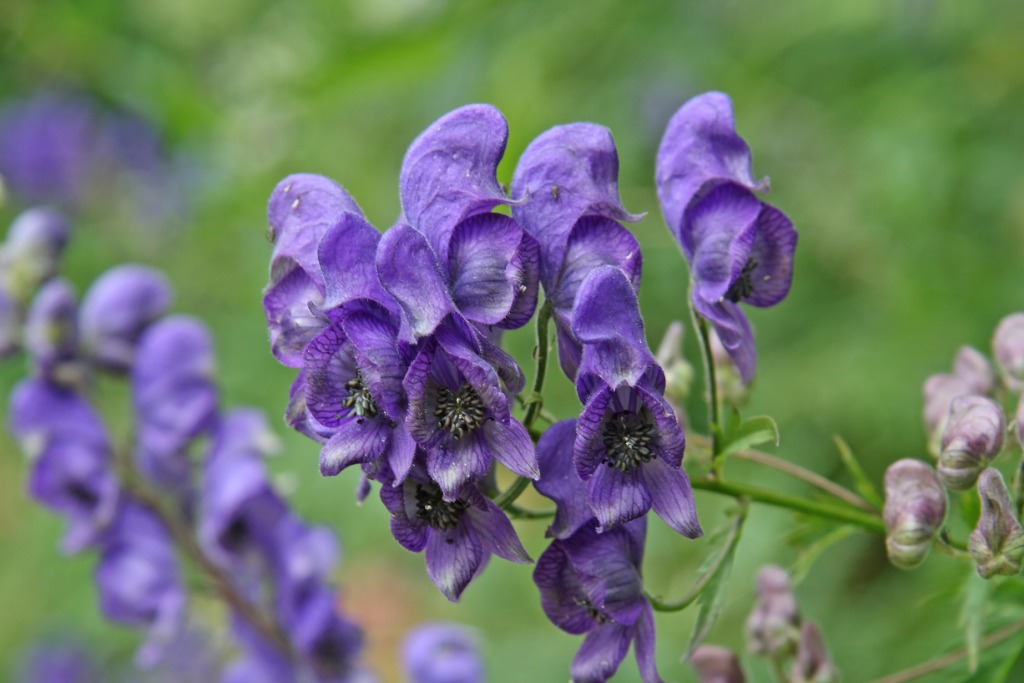Monkshood
(Aconitum carmichaelii)

Description
Aconitum carmichaelii is a species of flowering plant of the genus Aconitum, family Ranunculaceae. It is native to East Asia and eastern Russia. It is commonly known as Chinese aconite, Carmichael's monkshood or Chinese wolfsbane. In Mandarin Chinese, it is known as fùzǐ (meaning daughter root, or lateral root) and as wūtóu lit. "black head", referring to tuberous mother root, or root tuber) and in Japanese as torikabuto. Growing to 1.2 metres (4 ft) tall by 30 centimetres (12 in) wide, it is an erect perennial, with 3- to 5-lobed ovate, leathery leaves. Dense panicles of blue flowers are produced in late summer and autumn. It is valued as a garden plant, and numerous cultivars have been developed, of which 'Arendsii' and 'Kelmscott' (Wilsonii Group) have gained the Royal Horticultural Society's Award of Garden Merit. Aconitum also known as aconite, monkshood, wolf's-bane, leopard's bane, mousebane, women's bane, devil's helmet, queen of poisons, or blue rocket, is a genus of over 250 species of flowering plants belonging to the family Ranunculaceae. These herbaceous perennial plants are chiefly native to the mountainous parts of the Northern Hemisphere in North America, Europe, and Asia; growing in the moisture-retentive but well-draining soils of mountain meadows. Most Aconitum species are extremely poisonous and must be handled very carefully. Several Aconitum hybrids, such as the Arendsii form of Aconitum carmichaelii, have won gardening awards such as the Royal Horticultural Society's Award of Garden Merit. Some are used by florists. The dark green leaves of Aconitum species lack stipules. They are palmate or deeply palmately lobed with five to seven segments. Each segment again is trilobed with coarse sharp teeth. The leaves have a spiral (alternate) arrangement. The lower leaves have long petioles. The tall, erect stem is crowned by racemes of large blue, purple, white, yellow, or pink zygomorphic flowers with numerous stamens. They are distinguishable by having one of the five petaloid sepals (the posterior one), called the galea, in the form of a cylindrical helmet, hence the English name monkshood. Two to 10 petals are present. The two upper petals are large and are placed under the hood of the calyx and are supported on long stalks. They have a hollow spur at their apex, containing the nectar. The other petals are small and scale-like or nonforming. The three to five carpels are partially fused at the base.
Taxonomic tree:







